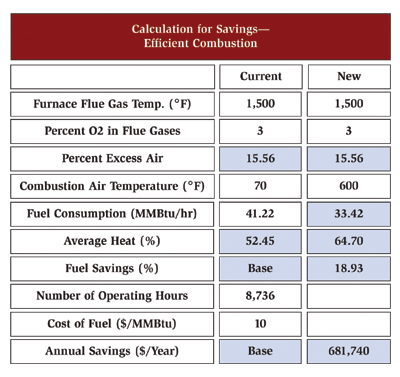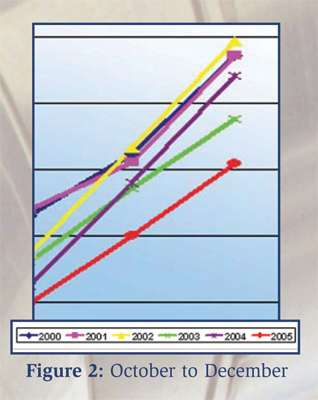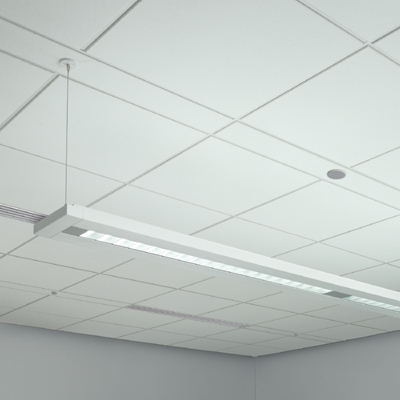In retrospect, June 11, 2007, may be a huge milestone in the advancement of industrial energy efficiency. On that day, the National Association of Manufacturers (NAM) announced its intention to promote energy efficiency to its 300-plus member companies. To do this, NAM signed a memorandum of understanding with the U.S. Department of Energy (DOE). The goals are “to assist manufacturing facilities to initiate and implement energy management programs; to adopt clean, energy-efficient technologies; and to achieve continual energy efficiency and intensity reduction improvements.” The partnership aims to promote the vast collection of energy-efficient technologies, diagnostic tools, and reference materials developed or sponsored by DOE. Prominent among these items are steam-related technologies and, of course, mechanical insulation.
This is a remarkable event for a couple of reasons. One is the fact that NAM, as a member-driven advocacy association, engages industry at its corporate levels. This means that the energy efficiency message is being introduced to top-level decision makers, not just engineering and maintenance staff. Also of note is that NAM has historically advocated more energy production, rather than conservation. NAM’s recognition of the need for efficiency resources is an indicator of just how challenged manufacturers are by today’s energy markets.
How effective will NAM’s outreach be? The answer to that question varies with the receptiveness of each individual member company. Implementing efficiency means investing money, making some procedural changes, or both. These things do not happen without leadership, nor do they happen without untangling the issues—mechanical and organizational—that allow energy waste to happen. In other words, an organization’s ability to become energy efficient depends in part on understanding what makes waste possible in the first place.
How Does Waste Happen?
How does a plant become energy inefficient? Much of it has to do with the degradation of production assets over time, coupled with the emergence of newer, more efficient technologies. The reasons are also human in basis. “That’s the way we’ve always done it” is the justification for long-entrenched work habits that become default procedures. Certain habits that save time and effort may be in place at the expense of greater energy consumption. These practices had little consequence when energy was cheap. However, the tradeoffs between time and money change as energy prices escalate. In most cases, equipment operators never see the bill for the energy they use, nor do the accountants paying the bill always understand how energy is used in their facilities. Reconciliation of energy costs is usually secondary to a plant manager’s need to meet production targets.
A facility’s investment in productive assets is a long-term commitment to a certain vintage of technology. Large, fixed assets will operate for years or even decades. This includes equipment like boilers, furnaces, and air compressors. In addition to these assets, most facilities operate complex production systems that employ a wide variety of smaller equipment, such as pumps, fans, and motors. Compared with the larger assets, these smaller components are more easily replaced. However, the design of the overall system in which they were installed is not as easy to change. Industries typically conduct multiyear planning cycles to organize major facility upgrades and system changes. Planning cycles allow facility managers to avoid frequent disruptions to their production schedules. These cycles take years to conduct and involve a number of considerations, including energy costs. This partially explains why many manufacturers do not respond immediately to proposed energy improvements, even if incentives are involved.
Over time, equipment operators begin to use energy in ways that engineers and other technicians never anticipated. These “services” represent industry’s unintended energy demand (and waste). Here are some examples:
- Budget defense. Many organizations now maintain the fiscal habit of developing next year’s budget based strictly on the previous year’s performance. In other words, the department that successfully decreases its expenditures this year can actually be penalized with a smaller budget next year. While few managers actively promote waste, many more simply will not challenge it. They can then confidently prop up their funding request for the coming year’s budget. In terms of energy use, this again means running machines unnecessarily, using fuel-rich combustion settings, and ignoring losses attributable to steam or compressed air distribution leaks.
- Comfort and convenience. Here is an example: Workers may use compressed air—an expensive plant utility—to perform work that could be performed just as effectively by a brush or broom. In some instances, a less expensive utility like flash steam could supplant the use of compressed air. An egregious example comes from one clever factory employee who “air conditioned” his work station with streams of compressed air, which he enjoyed by simply tapping several nozzles into overhead air distribution lines.
- Proof of effort. In today’s competitive, cost-sensitive economy, a worker’s survival can depend on keeping busy, or at least appearing to keep busy. This may explain why many operators prefer to leave certain machines running, even when there is no work in process. Motor drives, pneumatic tools, and other factory machinery all make a distinct noise. A manager can detect what machinery is running without having to look—it can be heard. The sound implies, “Yes, we are busy.” The energy wasted by machines that run unnecessarily is of no consequence to the worker—the energy cost is not reflected in his or her paycheck. However, energy provides a very valuable service to the operator who wishes to maintain the appearance of being busy.
- Safety. Lighting obviously contributes to the safety of working environments. Lighting “services” also are used to make a space more welcoming. It can become a habit to leave lights on regardless of the space—in storage rooms; break rooms; and, worse, in rooms that are already lit with natural daylight. As power becomes more expensive, these habits must be reconsidered. Sensors and programmable controls are readily available to make the decisions that humans cannot (or will not) make.
The take-away is that attempts to control energy use will almost always run afoul of someone’s dependence on the service that energy provides. Managers attempting to reduce energy waste must recognize and overcome the need to use energy for unproductive reasons.
How Can a Company Improve Its Energy Position?
Energy management starts with delegation. Many plant managers will put the energy burden squarely on the shoulders of one person, as if that individual can do it all. How can one person control energy costs when consumption reflects the daily decisions made by operations, maintenance, engineering, and finance staff? The energy manager might get great ideas from workshops, conferences, trade press, and professional networks, but no one else from the facility is picking up the same messages. The energy manager easily becomes a maverick, swimming against the tide of a facility’s disinterest (or worse).
This underscores the need for teamwork. A major hurdle to overcome is the interdepartmental rivalries that are usually fueled by competition for budget dollars. Energy managers must somehow overcome the “silos” of departmental authority. It is not uncommon, for example, for a procurement director to refuse to pay $10,000 for an energy audit that will identify many times that amount in potential financial savings for the company.
The key is for the energy manager to demonstrate to other department managers “what’s in it for them,” should they cooperate with a facility-wide energy management effort. More specifically, it is necessary to demonstrate how energy efficiency’s net benefits will filter down to a facility’s bottom line. This means overcoming departmental resistance to spending a dime that, in reality, will result in the entire organization’s saving a dollar.
The successful energy manager’s agenda becomes a hub from which win-win solutions are distributed to the departmental silos. The management team then works collectively, creating a whole value that is greater than the sum of the parts.
Just as industrial engineers can use tools developed by the DOE and others, top managers have a “toolkit” at their disposal. These tools are risk, time, and money. Use of any two of those three tools can be minimized, but it will be at the expense of the third.
For example, if the investment of time and money is minimized, a greater risk is assumed by simply not dealing with the root causes of energy waste and volatile energy prices. It means doing little, cheap, one-time projects, and switching fuels or fuel suppliers. By doing as little proactive energy management as possible, a company remains at the mercy of forces external to the organization, including changing technology, regulations, and volatile energy markets.
What if a company minimized its risk and investment of time? This can be done primarily by pursuing big capital projects (assuming that new equipment can do the work instead of people). But, of course, the big-project approach takes big money.
And if a company minimized its risk and investment of money? This can be done if the company is prepared to invest a lot of time. If, for some reason, the budget will not support the purchase of new, more efficient equipment, then the focus needs to be on the way people use and maintain current equipment. In short, this approach requires a culture change. Companies should be prepared to spend a lot of time boosting staff awareness of the energy-cost consequences of their daily work habits. They also must be prepared to encounter resistance. Energy managers will need to persuade and influence people, fostering and promoting success stories whenever they can be cultivated.
Forward-thinking companies will respond to NAM’s promotion of energy efficiency by changing the way they use energy. They likely often will begin by rethinking work habits and procedures. They will make an inventory of the “gap” between the efficiency of current assets and that of the best available assets. A business plan will establish financial energy metrics—monitored as least once per month—to guide the timing and amount of investments. They will document and replicate their success stories, and demonstrate direct contributions to the bottom line.
Top managers will discover quickly that energy use is as much a human issue as it is a mechanical one. To ignore the human component of energy cost control is to invite business risk. Awareness engenders accountability; and with accountability, companies have the motivation to actively manage energy risk.







